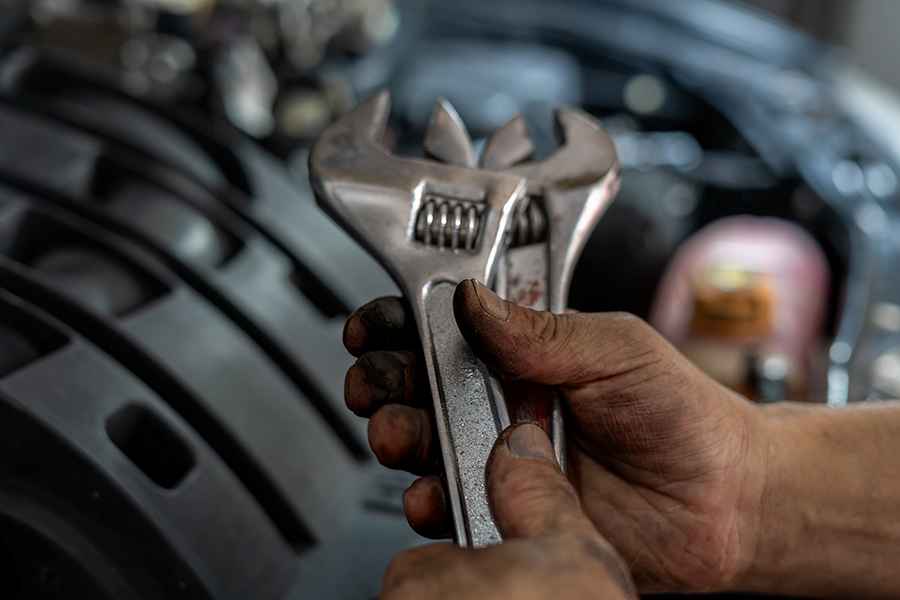How to Build a Two Car Garage for Your Off-Road Gear
If you’re into off-roading, you know your rigs need more than just a parking spot—they need a dedicated home. A two-car garage designed for off-road gear isn’t just about storage; it’s about protecting your investments, keeping tools handy, and having space to wrench on upgrades.

This guide walks you through planning, building, and optimizing a garage that fits your off-road lifestyle. Read on.
Plan Your Space for Functionality and Growth
Before swinging a hammer, think about what you really need. This includes finding the right dimensions (this includes standard measurements, specific square footage for bespoke clients, and so on) for your detached garage.
For starters, the basic 2 car garage dimensions are about 20 to 24 feet for both width and length. Meanwhile, the height is around eight feet. Do keep in mind that those figures aren't set in stone; off-roaders often need more room for their 2 car garage project intended for gear, tools, and workspace.
Consider these factors when determining the appropriate dimensions for your 2 car garage building project:
- Vehicle size: Jeeps, trucks, and lifted rigs need extra height and depth for your initial 2 car garage plan.
- Workspace: Will you install a lift? Build a workbench? These may alter the dimensions of your 2 car garage plan.
- Storage space: Tires, recovery gear, power tools, and spare parts eat up space fast.
- Future-Proofing: Will you add another rig later? Making room for future improvements and adjusting garage dimensions early in the game will prevent future headaches.
Sketch a rough layout and building sketch—tools on one side, vehicles in the middle, overhead storage for bulky items, and other adjacent structures.
Choose the Right Materials for Durability
Your garage takes abuse—mud, oil, heavy equipment—so build it tough.
First, skip the plain concrete floor. Go for epoxy coating for stain resistance. Next, steel or moisture-resistant drywall for a durable garage.
For the roofing, metal material lasts longer than shingles and other roofing materials. Finally, if you’re heating/cooling the space, spray foam seals gaps best.
Maximize Headroom and Door Clearance
A standard measurement garage door won’t cut it for lifted trucks or roof racks. Here’s what to do: choose high-lift door tracks, go with taller doors, and pick vaulted ceilings for extra space for roof-mounted accessories.
To proceed, measure your tallest vehicle, then add clearance for that.

Install Ample Lighting and Electrical Outlets
Dim garages make repairs a headache. Light it right with the appropriate lighting fixtures. Want bright, energy-efficient, and long-lasting lights? Go for LED shop lights. Next, put in the appropriate task lighting over workbenches or lift areas.
For outlets, you'll need the prescribed models for tools, chargers, air compressors, and other equipment in your garage kits per local building codes. Welders and high-power equipment would require higher-voltage power lines.
Optimize Storage for Off-Road Gear
Remember: clutter kills productivity. Keep your gear organized with the following:
- Wall-mounted racks for shovels, traction boards, and hi-lift jacks;
- Overhead shelving for holding tires, roof racks, and bulky items;
- Pegboards or slat walls for tools and small parts;
- Sealed cabinets for keeping dust and moisture off sensitive gear; and so on.
Label everything—you’ll thank yourself later.
Create a Dedicated Workbench and Tool Area
There's no more need to be working on the floor. Set up a proper workspace for your garage.
Set up a study workbench that you can use for your general tasks. Next, bolt down your vise and grinder mounts for stability. For your tool chest, rolling cabinets are best for keeping essentials within reach. Then, sort bolts, fluids, and small components into easy-to-understand bins.
Consider a Vehicle Lift for Maintenance
If you’re serious about off-roading, a lift saves your back and makes repairs easier. You can look into the following examples:
- Two-post lifts are best for major work (requires thick concrete);
- Four-post lifts are great for storage and lighter maintenance; and
- Scissor lifts are your go-to if you want something compact; nonetheless, they have limited height.
Add Ventilation and Climate Control
A stuffy garage is miserable in summer and freezing in winter. Fix that with exhaust fans to pull out fumes and heat, a mini-split air conditioner or heater, window openings, and insulated doors.
If you’re welding or painting, explosion-proof fans are a must.
Secure Your Garage Against Theft
Off-road gear is expensive—don’t make it easy for thieves to steal them. Install the following security features in your newest two car garage:
- Steel-reinforced doors that are harder to kick in;
- Motion-activated lights to deter nighttime intruders;
- Security cameras to let you monitor remotely; and
- Deadbolt locks for garage doors.
Personalize the Space for Your Needs
Your garage should reflect your style and workflow. You can set up wall art (trail maps, vintage signs, or vehicle blueprints), a sound system, and so on to truly own the space.
Make your garage a place you want to spend time in.
Final Thoughts: Build a Garage That Works as Hard as You Do
A well-built two-car garage isn’t just a parking spot—it’s your off-road command center. By planning for space, durability, and functionality, you’ll create a workshop that protects your rigs, streamlines projects, and fuels your passion.
Now grab your tools, break ground, and start building the ultimate off-road garage. Your rigs (and your back) will thank you.